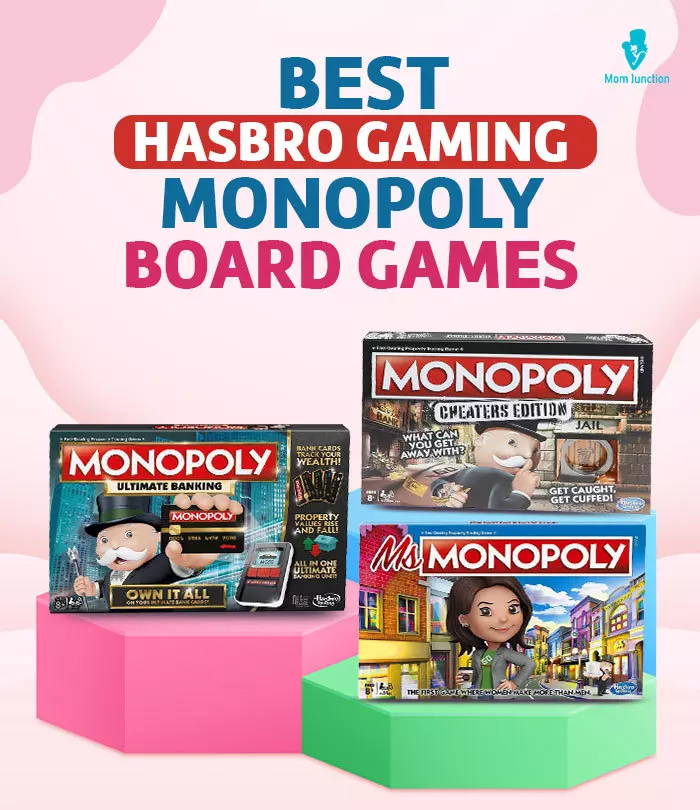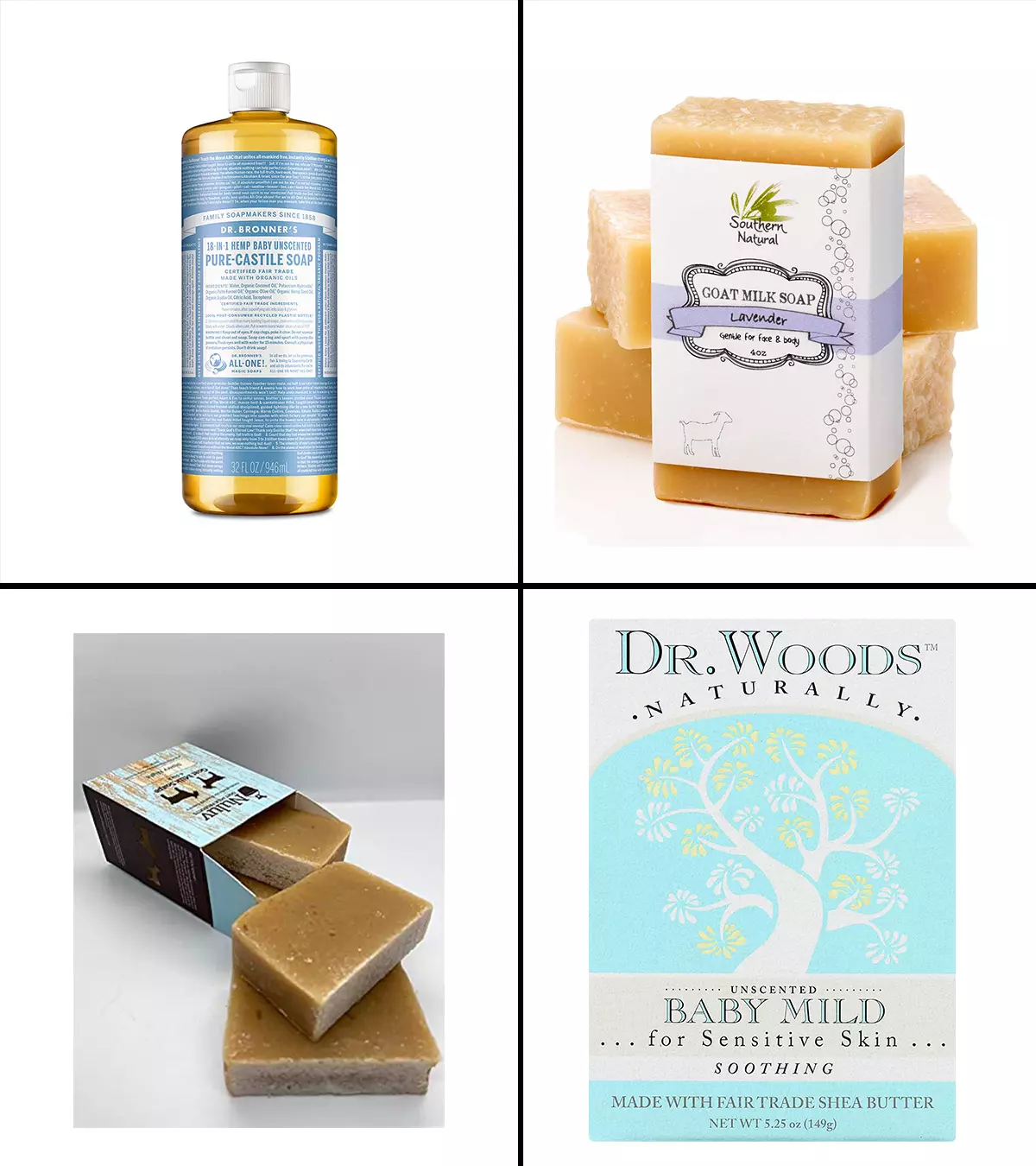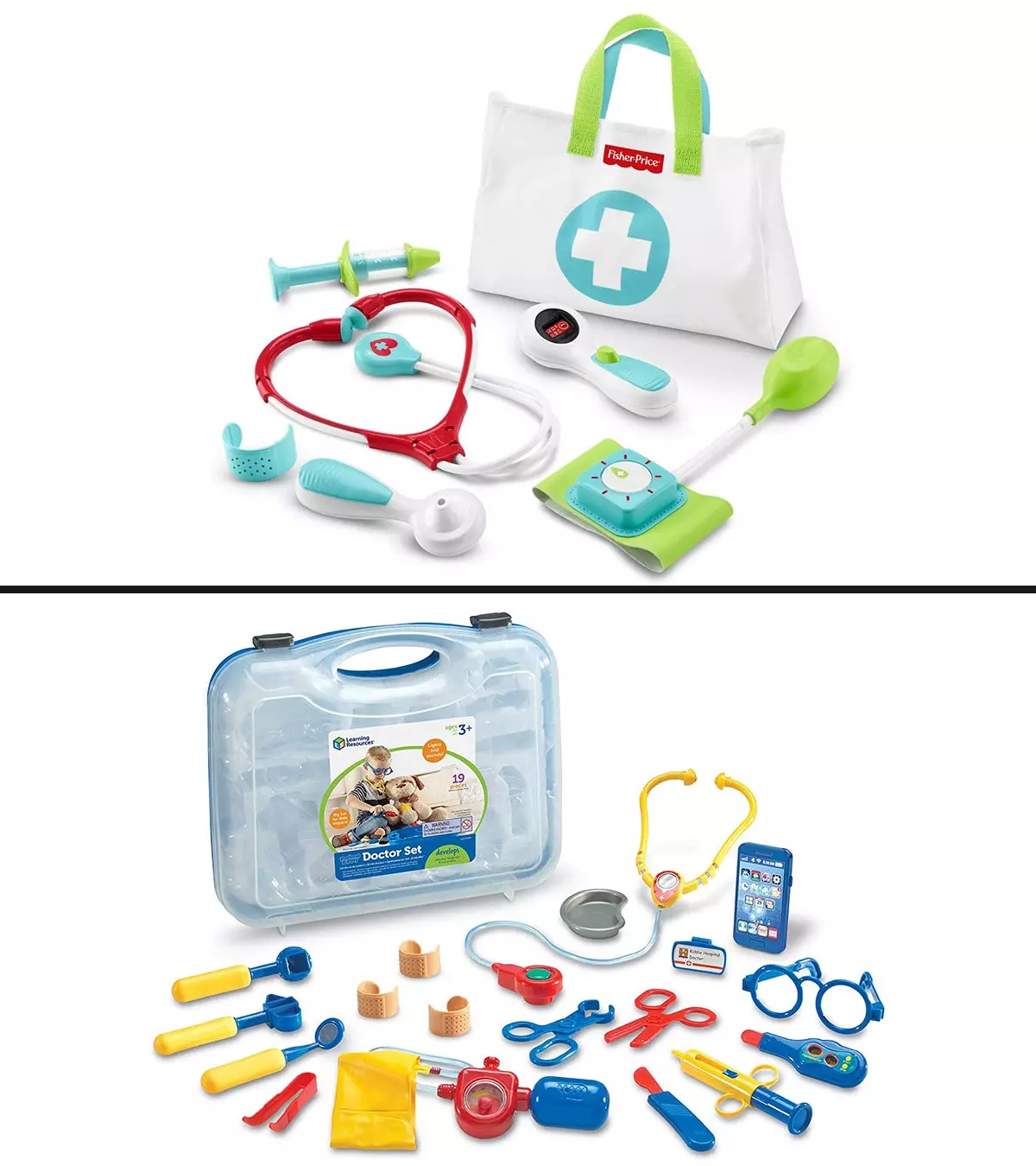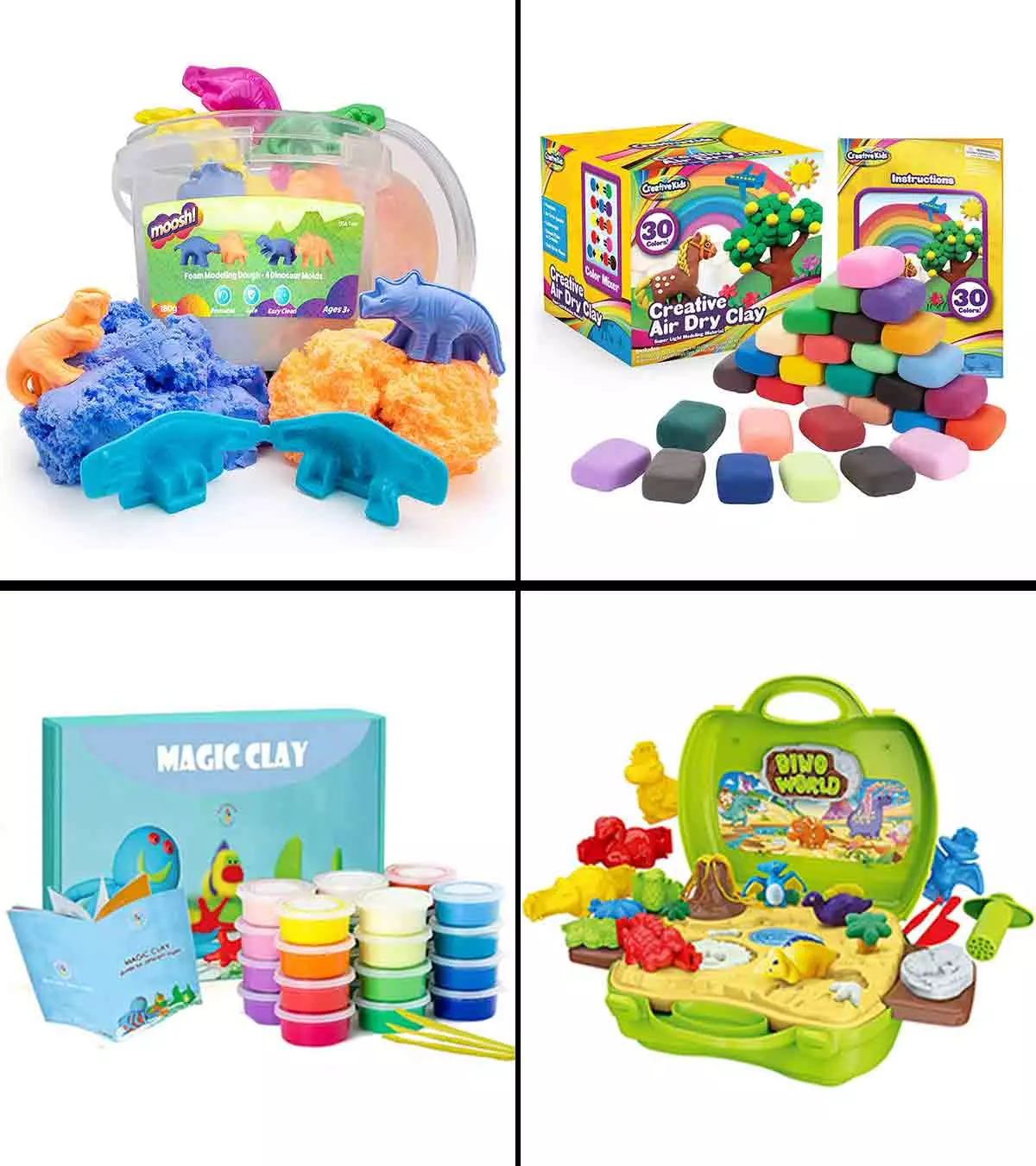
Image: Shutterstock
Board games have been a go-to choice for games nights or parties for a long time, and they continue to do so. This post on family board games will give you interesting ideas for your next board game night. After the whole week of offices, schools, household chores, and various other works, it is the weekends that allow you to give undivided attention to your family. And what better way to enjoy those moments than playing these games? Not only do they entertain everybody, but they also help in enhancing your vocabulary, thinking, and community skills. So, read along for an interesting list of board games that add color to your family time.
Points To Consider Before Choosing A Family Board Game
If you are planning to buy a board game, do not do it randomly. Instead, choose it depending upon the occasions on which you will play. Here are a few other things to keep in mind:
- Family size: Every game has the maximum number of players that can play at a time. Pick a game that suits the number of members in your family, from two to six.
- Recommended age: This is important when you have kids at home. Choose a game that is relevant for everyone who will be playing. For example, if you plan to include young children and teens in your game, then pick one that caters to both ages.
- Time span: Some games can be completed within an hour while others take a few hours. Consider the time you and other family members can spend on the game, based on attention spans and other planned activities. For example, if you are planning a family game night with older kids and adults, go you might choose a strategy game that can take up to five hours.
- Complexity of the game: If you are a bunch of obsessive gamers, choose a complex and strategic game. If playing with young children, on the other hand, a simpler game that can be played with ease is a better choice.
- Fun to play: The point of a family game is to spend enjoyable, quality time together. So make sure the game you pick is in line with this idea.
- A tad bit educational: We know that game-time must be fun and entertaining. But why not select a game that can enhance your children’s vocabulary, creativity or reasoning skills, as well? Many games are both entertaining and educational.
- Stay relevant over time: When you invest in a board game, you might want to consider whether it will stay relevant to your family over time.. There are a few games which have longevity and grow along with your family.
Bearing in mind the above tips will make it easier to make a wise choice. Therefore, let’s move on to the games themselves.
Here is a list of 20 family board games you may consider buying.
1. Exploding Kittens

This is a fun card game in the players dodge the exploding kitten card and attack the other players to eliminate them.
Type: Logic and memory
No. of players: 2 to 5
Age: 7 and up
Playtime: 10-20 minutes
How to play:
- Stack the cards at the center and sit around them.
- Players take turns drawing one card at a time.
- If you draw an exploding kitten card, you are out of the game.
- There are fewer exploding kitten cards than others and they are stacked at random in the deck, making the game suspenseful and fun to play.
- Other cards grant privileges like diffusing the explosion, skipping your turn, attacking other players, peeking at the deck, or secretly relocating the exploding kitten card.
- Each player can use these other cards to dodge the exploding kitten card and play strategically so that only one player remains at the end. The last player standing wins.

2. Catan

Enjoy building settlements, armies and gathering supplies? If so, this game is for your family.
Type: Strategy and resource management
No. of players: 3-4
Age: Catan junior (6-9 years); there are complex versions for teens and adults
Playtime: 1-2 hours
How to play:
- Each player will get a turn to roll the dice.
- The number rolled will give the player a chance to build settlements, expand, and acquire resources.
- During a particular turn, if a player doesn’t have resources, they can barter or bargain with other players.
- The winner of the game is decided by the victory points earned by building roads, houses, armies, etc.
- The first player to gain 10 victory points wins.
[ Read: Board Games For Kids ]

3. Codenames
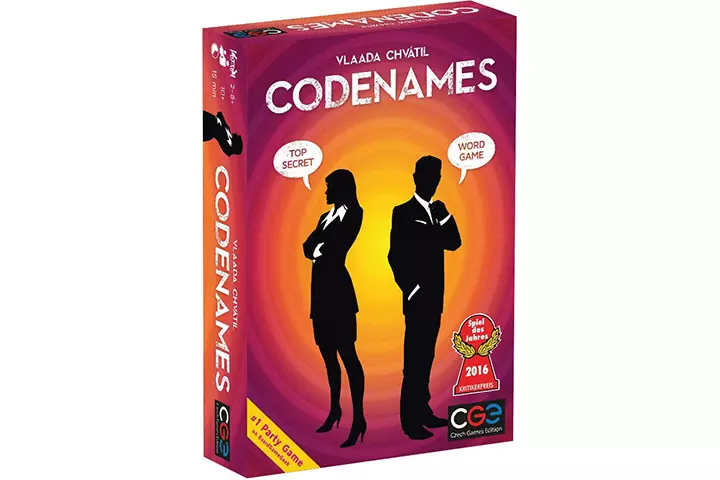
Play this secret agent board game in which you use clues to identify field agents.
Type: Logic
No. of players: 4-8
Age: 7 and up
Playtime: 15-30 minutes
How to play:
- Divide the players into teams (blue and red) so that each team has one spymaster and an equal number of field operatives.
- Spymasters sit facing each other, while remaining team members sit across their spymasters.
- In the middle of the table, shuffle and place the 25 name cards (out of the available 400) in a 5×5 grid.
- The spymasters then select a random key card and place it on the stand such that the players of the other team cannot see it. This tells the spymaster the positions of field agents, bystanders and the assassin on the board.
- The spymaster then gives the opposite team a clue and the number of agents that are connected to that clue. For example, if the clue is ‘bread’, then the words ‘butter’ and ‘jam’ are related to it, and if they are present on the table, then the spymaster will say ‘bread (2)’.
- The players get two chances+1 extra chance to guess the words, and if they guess the word that is on the board, the spymaster places their colored card covering the words.
- When a player guesses a word that has an ‘innocent bystander’, then the other team gets a turn. Similarly, if they guess a word related to the assassin, then they lose.

4. Busytown — Eye Found It!
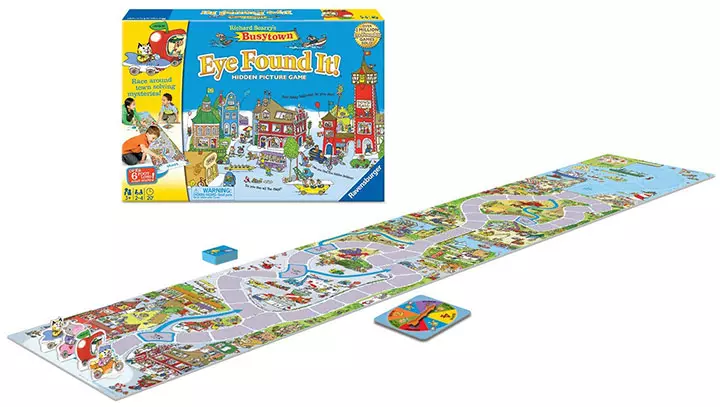
Your kids will enjoy this game and all the adventures from start to finish. The goal is to reach the endpoint before the pigs eat away all the food.
Type: Mystery solving
No of players: 2-4
Age: 3+
Playtime: 30 minutes
How to play:
- Set up the game by placing the movers at the start, food tiles on Picnic Island and the ferry at the end of the road.
- Each player has to spin the spinner, and when it lands on a number, the player advances accordingly.
- If it lands on ‘Pigs eat’, then one food tile needs to be removed from Picnic Island.
- If a player gets a Goldbug card, then they need to solve the mystery.
- The players need to reach the ferry by solving the mysteries en route.

5. Scrabble

This classic word game is an all-time favorite. Players take turns to build words and gain points.
Type: Vocabulary
No. of players: 2-4
Age: 5+ for junior scrabble
Playtime: 50 minutes
How to play:
- All players pick seven random tiles from the bag and place them on racks in front of them.
- The first player forms a word with the letters on their rack and places it anywhere on the board.
- The next player must use a letter from the first word and the letters on their rack to form a word.
- This continues until all the tiles in the bag are used.
- Each letter has a value, as indicated by the number on its tile, and the players add up and keep their individual scores. The person who scores the highest wins.

6. Pandemic

The mission is to save the world from deadly viruses. The players have to collaborate with each other to stop and eradicate the deadly viruses.
Type: Strategic role-play
No. of players: 2-6
Age: 8 and up
Playtime: 45 minutes
How to play:
- Each player is assigned a role such as a scientist or researcher. Each has their unique strengths, which help the team fight the infection.
- In the beginning, random city cards are drawn, and infections placed in decreasing order in those cities.
- With each turn, the players have a chance to move around the world, share knowledge, build research centers, and work towards finding a cure.
- If a player draws an endemic card, then it causes the spread of the infection to a new city or an outbreak in an existing city.
- So, the players must move around to the cities with infections and try to reduce the infection, and find a cure.
- Once the players are able to eradicate all the diseases, they all win.
- But if they run out of city cards or if the infection reachesthe final outbreak stage before the players eradicate all diseases, everyone loses.

7. Monopoly
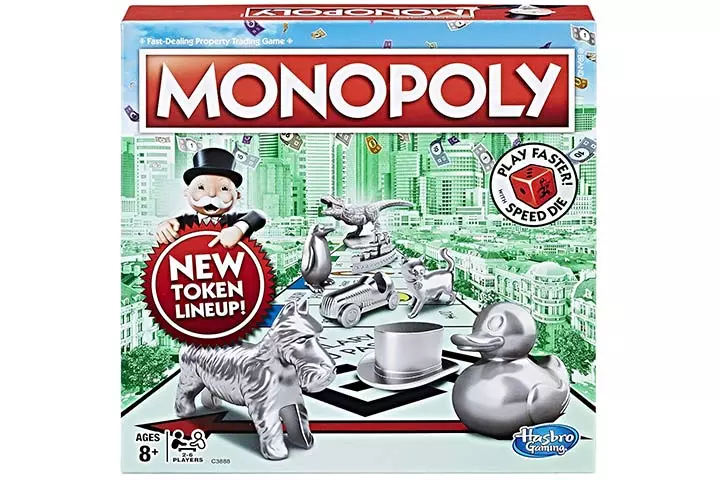
The objective is to have a hold on all the properties on the board and to force the other players into bankruptcy.
Type: Strategy and resource management
No. of players: 2-10
Age: 8+
Playtime: 1-4 hours
How to play:
- All the players begin the game from the start location on the board.
- The money is divided equally among the players, and leftover money is given to the bank.
- Whenever a player lands on empty land, they can buy it, and when other players land on it, they need to pay rent to the owner.
- The players can also build houses and hotels to charge higher rents.
- The player who manages to own and build the highest number of properties without going bankrupt wins.

8. Don’t step in it

The player who has least stepped in dog poop wins.
Type: Skill and action
No. of players: 1-8
Age: 4+
Playtime: 20 minutes
How to play:
- Spread the game mat on the floor and ask the kids to make 8 dog poops using the molds and the play dough.
- Place the dog poop randomly on the game mat.
- Decide who goes first and that player must be blindfolded.
- One player will spin the spinner.
- The number the spinner lands determines how many steps the player has to move forward on the mat.
- The other players can add a poop, wherever they please, on the game mat.
- The player has to reach the end of the mat blindfolded without stepping on the poop.
- All the players complete their turn and the one who has stepped on the poop the least wins.
[ Read: Indoor Games For Kids ]

9. Not Parent Approved
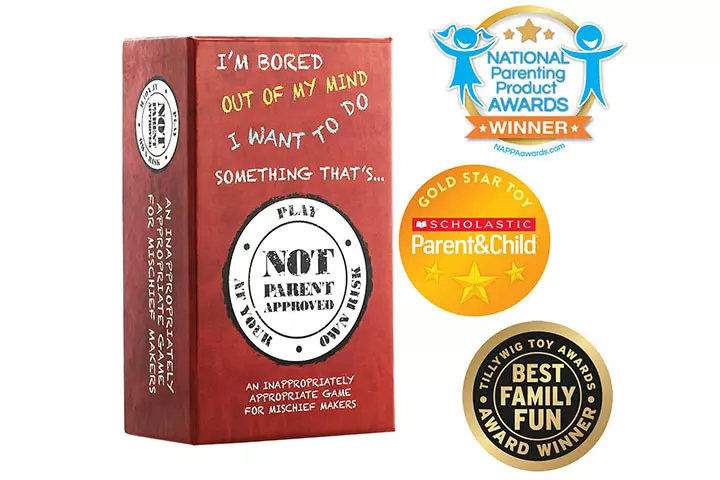
This board game is sure to bring out some laughs. The player who gives the best answer card wins.
Type: Fill-in-the-blank
No. of players: 4-10
Age: 8+
Playtime: 10-20 minutes
How to play:
- First, all players burp and the one who burps the loudest becomes the burp master.
- In each round, the players draw seven red answer cards, and the burp master will have the blue question card.
- When it is a player’s turn, the burp master reads the question aloud, and the player has to choose the best answer from the seven red cards.
- The player hands over the red card to the burp master face down. The burp master then reads the question and the answer aloud.
- After each player gets a turn, the burp master picks the funniest sentence, and that player wins.

10. Life Game

In this game, kids become adults while the adults can go back to being children. The decisions you make will determine whether you win or lose.
Type: Strategy and role-play
No. of players: 2-6
Age: 8+
Playtime: 45 minutes
How to play:
- Place the cars at the start position and stack all the career, salary, and life cards.
- Each player gets $10,000, and the remaining money goesto the bank.
- Each player chooses between the career or college paths.
- Once decided, they spin the spinner and move according to the number.
- There are three colored places on the game board, the green ones are the salary places, and each player will collect the given salary for the profession they chose; the orange spaces have instructions which need to be followed; the red spaces are life spaces and when a player lands on them, they get a life card.
- The players continue to play until they reach the end of the board and each of them can choose to retire at the billionaire’s estates or the countryside until the other players complete the game.
- Once the game is completed, the player who has the highest amount of money along with the number of life cards wins.

11. Blokus
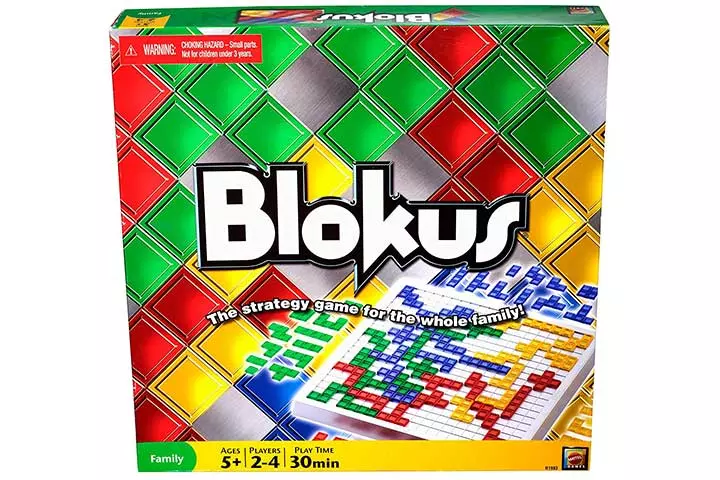
The objective of this game is to play by the rules and strategically place your blocks on the board.
Type: Strategic
No. of players: 2-6
Age: 8+
Playtime: 20-30 minutes
How to play:
- Each player can choose one colored block (21 in number) and place it in front of them.
- The player who starts the game has to place the block such that it covers a corner square, as the game must start from one corner of the board.
- The players take turns placing their blocks.
- In the subsequent turns of the game, the block must be placed such that it touches one other piece of the same color.
- Once a block is placed, it cannot be moved until the end of the game.
- This continues until the board is blocked and the players can no longer place their blocks as per the game rules.
- Each block placed will add 1 point to the player’s score and, in the end, a player earns 15 points if all their blocks are placed on the board, and 5 bonus points if the last piece to be placed is the smallest one.

12. Taboo

Teams can compete and play this fun game, in which the objective is to guess the word with the help of the clues.
Type: Guessing
No of players: 2 or more
Age: 8+
Playtime: 5-15 minutes
How to play:
- Divide the players into two equal teams — make sure you equally distribute the younger and the older players in each team.
- One person from each team has to be the clue-giver.
- The clue-giver draws a card from the pack, making surethe other players cannot see it.
- The cards have one word with a list of taboo words below it.
- The clue-givers must provide clues to help team members guess the word on the card.
- The clue-giver must not use any of the taboo words.
- The opposing team keeps time; if the word is not guessed within the stipulated time, the turn goes to the opposing team.
- If the clue-giver uses any word from the Taboo list, then the other team gets a point.
- At the end of the game, the team that guesses the most words wins.

13. Sorry!
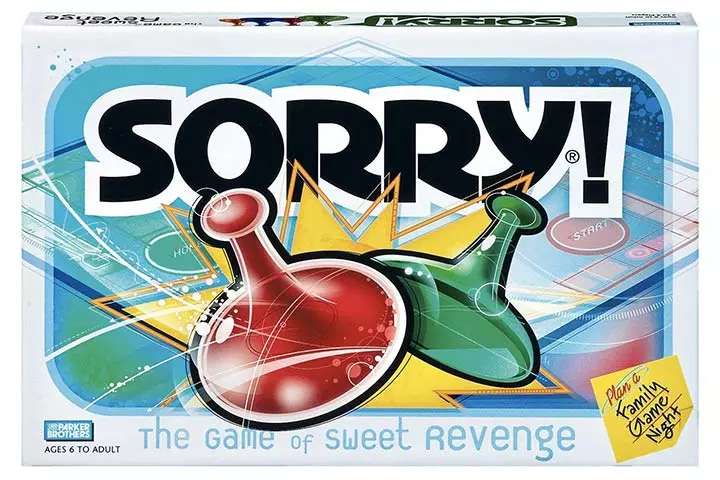
In this highly competitive game, the players can attack and send other players to the start position while they themselves progress.
Type: Logic
No. of players: 2-4
Age: 6+
Playtime: 15-20 minutes
How to play:
- Each player selects one color and gets four pawns, placed at the respective start places on the board.
- The deck of cards is shuffled, and the first player draws one card and places it facing upwards on the table.
- A pawn can be moved from the start only when the player draws a 1, 2 or ‘sorry’ card.
- All the players take turns drawing cards and performing the action written on it. The players get a chance during to bump other players’ pawns to the start position.
- The player who gets all their pawns to the home position wins.

14. Candyland

Play this colorful board game and try to reach Candyland castle while overcoming the obstacles on the way.
Type: Competitive
No. of players: 2-4
Age: 3+
Playtime: 15-20 minutes
How to play:
- Each player chooses one pawn and places it on the start location.
- The cards are shuffled and placed near the board; the youngest among the players begins the game by drawing a card.
- The cards are of different colors (single and double), and the players have to move accordingly towards the candy land castle. For example, if a player draws a single blue card, then they have to move their pawn to the next blue space (for doubles move the pawn to two blue spaces).
- The player who reaches the Candyland castle first wins.

15. Jenga

This family board game needs skill, strategy, and precise hand movement, as one wrong step can cause the Jenga tower to stumble.
Type: Physical skill and strategy
No. of players: 1-4
Age: 6+
Playtime: 5-15 minutes
How to play:
- This game comes with 54 wooden blocks. Players must first build a tower by placing three blocks horizontally and three blocks vertically one above the other.
- Once the tower is built, the players take turns to remove one block from anywhere within the tower then place it on top of the tower.
- The players must use only one hand to remove the blocks and adjust any misplaced blocks. And all of this must be done making sure the tower doesn’t collapse.
- The player who collapses the towers loses.

16. Pictionary
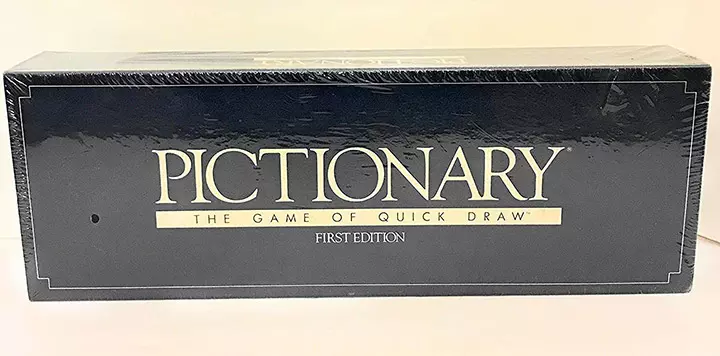
Winning this game depends on how well you can draw and convey the meaning of the words.
Type: Vocabulary and drawing
No. of players: 2 teams
Age: 7+
Playtime: 30 minutes
How to play:
- Divide the players equally into two teams.
- One player from each team draws the pictures.
- This player then takes a card from the stack, reads the word and tries to draw clues on a board.
- The rest of the players guess the word using the drawings.
- The player who is drawing must stay mute and only give clues by drawing on the board.

17. Guess Who?
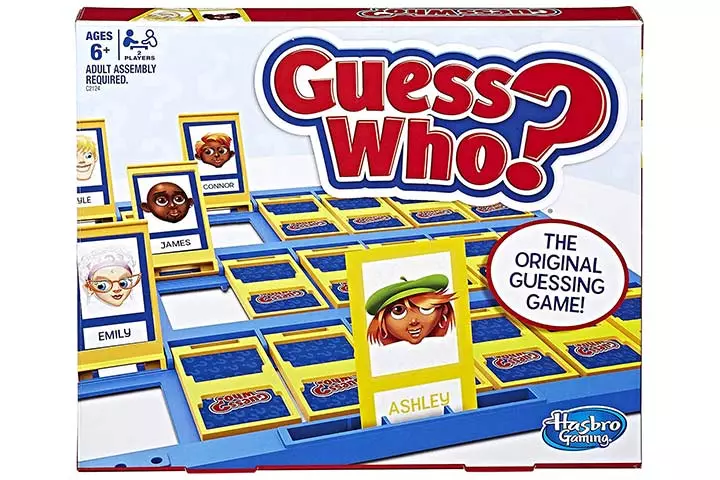
Guess the characters on the board before the opponent does. In this game, you can ask certain questions to guess who the character is.
Type: Guessing
No. of players: 2
Age: 7+
Playtime: 10-20 minutes
How to play:
- Two players take their game board that has 24 faces; it can be flipped open and close.
- When it is their turn, each player draws a card from the deck; this card has the character the opponent has to guess.
- The opponent then asks the player a series of ‘yes’ and ‘no’ questions which the playeranswers as the opponent tries to guess the correct name.
- The player who manages to guess the highest number of characters wins.

18. Mouse Trap

This game comes with several interactive mouse traps which you can use to trap others, or get trapped in on your way to the finish line.
Type: Strategic
No. of players: 2-4
Age: 6+
Playtime: 30-60 minutes
How to play:
- Setup the board and assemble all the mouse traps.
- The player who first rolls a 6 will move their pawn forward, and each space on the board has colors and specific actions.
- The players have to move around the board, collecting cheeses; they also have a chance to trap the other players or steal their pieces of cheese.
- The player who gets the highest cheese pieces wins.

19. 5 Second Rule
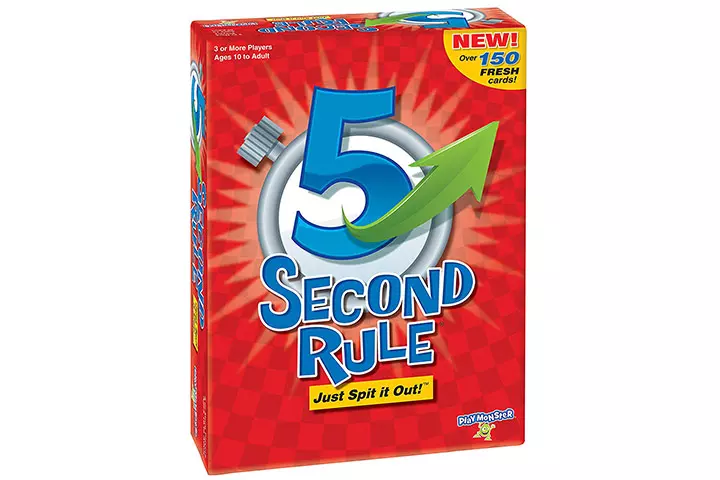
In this, the player who gives answers to all the questions gets a point.
Type: Guessing
No. of players: 2+
Age: 10
Playtime: 10-20 minutes
How to play:
- Players take turns being in the hot seat, while the other players sit around the hot seat.
- The cards which have questions that start with ‘name 3…’
- One of the players draws the card and asks the question aloud; the game starts from the player who is on the hot seat.
- If that player is able to answer correctly within 5 seconds, then that player gets the point. Otherwise, the question gets passed on to the next player.
- If none of the players is able to answer the question, then the player on the hot seat gets a point.
- The player with the highest points wins.
[ Read: Games For 4-Year-Olds ]

20. Scattergories
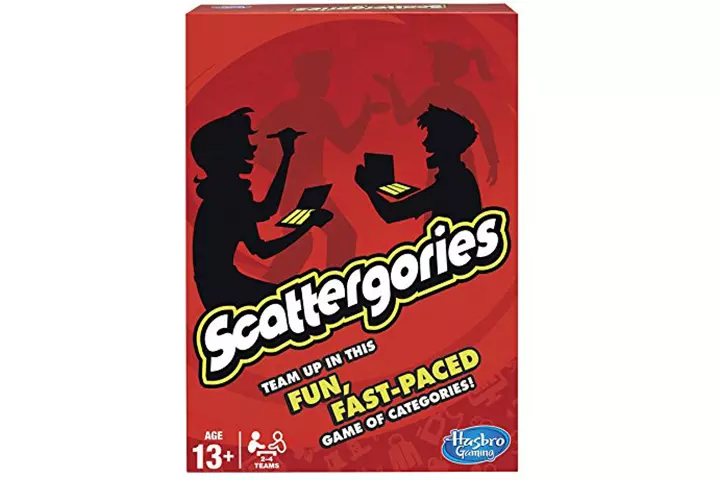
One who can think out of the box wins.
Type: Creative thinking
No. of players: 2-6
Age: 13+
Playtime: 3 minutes per round
How to play:
- This game can be played in 3 rounds.
- Each player needs to have a notepad and the lists that will be used for the rounds.
- During their turn, each player rolls the dice, and all must attempt to create answers starting with the letter rolled. It must belong to the category in the first list.
- Each round is timed, and the player who writes the highest number of unique answers wins.

There’s no better way to connect with your loved ones than by playing a family board game together. They help you create wonderful memories together while allowing you to bond. With various options available, you need to consider the number of family members and the age range to ensure your whole family can participate. Before choosing a game for your family, ensure that you look at your preferences, the game’s complexity, duration, and other crucial factors to make it an enjoyable experience.
Infographic: Important Considerations Before Selecting A Family Board Game
In this digital era, board games can be a perfect choice to bring the family together away from their phones and create bonding moments with everyone. However, choosing the best board game for the whole family can be challenging. Therefore, we’ve provided a buying guide in the infographic below to help you choose the best options.

Illustration: Momjunction Design Team
What is your favorite family game and why? Do let us know in the comments section below.
Disclaimer: MomJunction may earn a commission when products are purchased through affiliate links given in the article. However, this partnership does not influence the editorial content featuring in our list.
Community Experiences
Join the conversation and become a part of our nurturing community! Share your stories, experiences, and insights to connect with fellow parents.
Read full bio of Dr. Maggie C. Vaughan
Read full bio of sanjana lagudu
Read full bio of Wedetso Chirhah
Read full bio of Shikha Thakur






